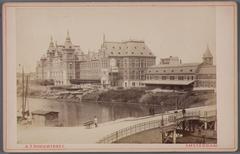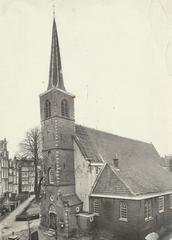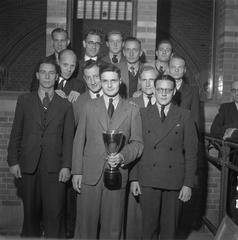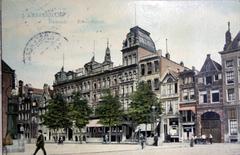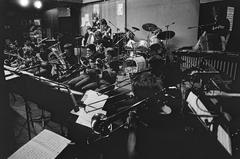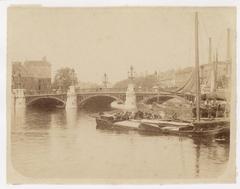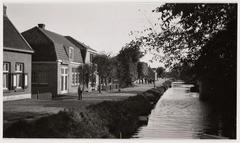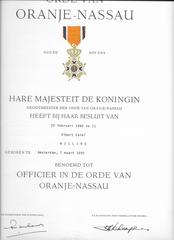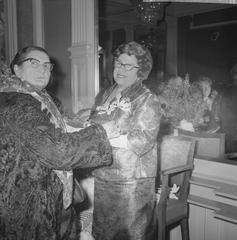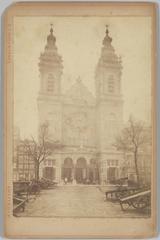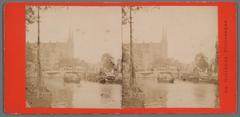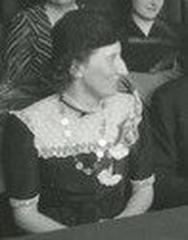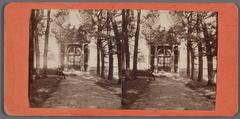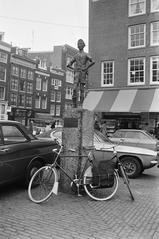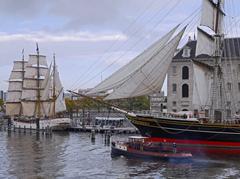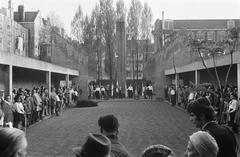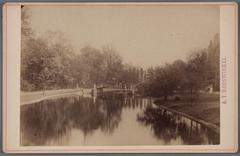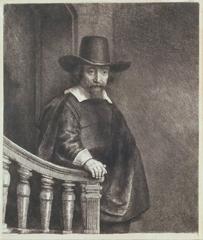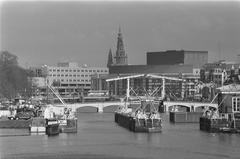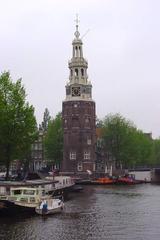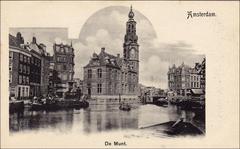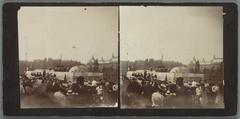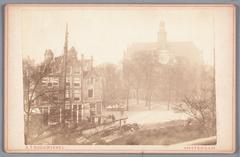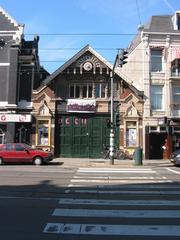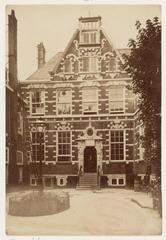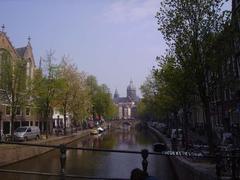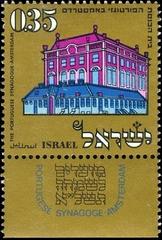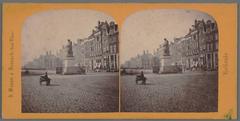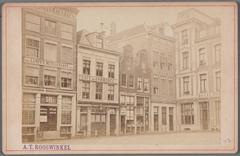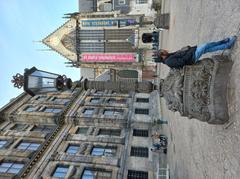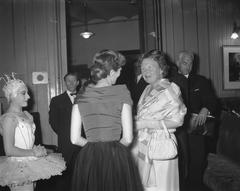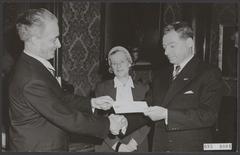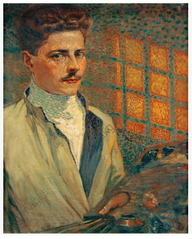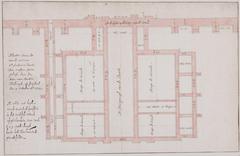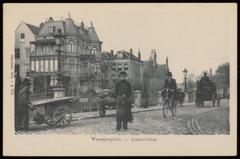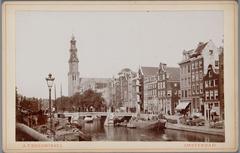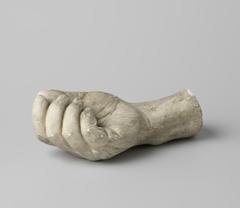
Het Wapen van Amsterdam: Visiting Hours, Tickets, and Comprehensive Tourist Guide
Date: 03/07/2025
Introduction: Discovering Het Wapen van Amsterdam
Het Wapen van Amsterdam—the historic coat of arms of the Dutch capital—is a powerful symbol representing the city’s resilience, history, and civic pride. Recognized by its black shield adorned with three silver Saint Andrew’s crosses, crowned with an imperial crown and flanked by golden lions, the emblem is woven into the city’s identity and visible throughout Amsterdam (amsterdam750.nl; DutchAmsterdam).
Beyond its heraldic significance, “Het Wapen van Amsterdam” also names one of the city’s most celebrated canal boats, offering immersive sightseeing and private event experiences. This guide explores the origins, meanings, and locations of the coat of arms, provides practical visitor information, and covers the canal boat experience—ensuring a rich and informed journey through Amsterdam’s heritage.
Table of Contents
- Introduction: The Significance of Het Wapen van Amsterdam
- The History and Evolution of the Coat of Arms
- Symbolic Elements and Their Meaning
- Where to See the Coat of Arms: Locations, Visiting Hours & Ticket Info
- The Het Wapen van Amsterdam Canal Boat Experience
- Accessibility, Tours, and Travel Tips
- Legal Protection and Modern Usage
- Cultural Impact and City Branding
- FAQs
- Conclusion and Visitor Summary
- References
The History and Evolution of Het Wapen van Amsterdam
Medieval Beginnings and Development
The origins of Amsterdam’s coat of arms date back to the 13th century, reflecting the era when heraldic symbols served as identifiers for cities and noble families (amsterdam750.nl). The earliest evidence—such as a branding tool from c. 1350—shows the emblem’s long-standing presence in the city’s history (ONH).
The Three Saint Andrew’s Crosses: Theories and Interpretations
- Saint Andrew’s Cross: These X-shaped crosses are linked to the martyrdom of St. Andrew, but the direct connection to Amsterdam remains uncertain.
- Noble Persijn Family: The Persijn family, whose arms featured multiple Saint Andrew’s crosses, likely inspired the city’s symbol (ONH).
- Legend of the Three Plagues: A popular myth suggests the crosses represent fire, floods, and plague, though historical evidence is lacking (Amsterdam Monumentenstad).
- Germanic Protection Symbol: The crosses may have served as protective symbols or markers of justice.
- River Crossings Theory: Some propose the crosses mark three crucial fords over the Amstel River (Babel Magazine).
The Imperial Crown and Motto
The imperial crown was granted in 1489 by Emperor Maximilian I, enhancing the city’s prestige within the Holy Roman Empire (DutchAmsterdam). The motto “Heldhaftig, Vastberaden, Barmhartig” (“Heroic, Resolute, Merciful”) was added in 1947 to honor Amsterdam’s WWII resistance (ONH).
Symbolic Elements of the Amsterdam Coat of Arms
- Shield: Black with three vertical silver Saint Andrew’s crosses, bordered by red.
- Imperial Crown: Symbolizes imperial favor and historical status.
- Golden Lions: Represent strength and vigilance.
- Motto Banner: A postwar addition recognizing the city’s courage.
- Colors: Red, black, and white—emblematic of the city, also featured on Amsterdam’s flag.
Where to See Het Wapen van Amsterdam: Locations, Hours & Ticketing
Key Sites
-
Royal Palace on Dam Square
- Hours: 10:00 AM – 5:00 PM daily (subject to change)
- Tickets: Required for entry, available online and at the palace (Royal Palace Amsterdam)
- Highlights: Prominent display on the façade and within the palace.
-
Amsterdam Museum
- Hours: Tuesday–Sunday, 10:00 AM – 5:00 PM
- Tickets: Purchase online or on-site; discounts available (Amsterdam Museum)
- Highlights: In-depth exhibitions on city heraldry.
-
Westerkerk Spire
- Hours: Typically 10:00 AM – 5:00 PM; free entry to church, separate ticket for tower visit.
- Highlights: Imperial crown and coat of arms atop the spire.
-
Bridges, City Hall, and Public Spaces
- No ticket required; the emblem is visible on bridges, Amsterdammertjes (bollards), and many public buildings.
The Het Wapen van Amsterdam Canal Boat Experience
Overview
The name “Het Wapen van Amsterdam” also refers to a renowned salon boat, operated by Rederij de Nederlanden, offering private cruises and events along the city’s historic waterways (wapenvanamsterdam.com; denederlanden.com).
- Operating Hours: By reservation, typically between 10:00 AM and 10:00 PM.
- Booking: All cruises are by private charter; minimum rental is 3 hours, starting at €795.
- Capacity: Up to 175 standing, 125 seated guests.
- Features: Panoramic windows, full bar, accessible restrooms, heated interiors, open decks.
- Accessibility: Fully accessible for guests with mobility challenges.
Booking & Practical Tips
- Book well in advance, especially during festivals or peak seasons.
- Cruises are customizable for sightseeing, dining, or special events.
- Embarkation points are flexible and can be arranged citywide.
- All bookings are handled online or via direct contact—no on-site ticket sales.
Accessibility, Guided Tours, and Travel Tips
- Accessibility: Major sites (Royal Palace, Amsterdam Museum, canal boat) are wheelchair accessible.
- Guided Tours: Available through museums and local operators, often highlighting the coat of arms and its stories.
- Nearby Attractions: Dam Square, Nieuwe Kerk, Amsterdam’s historic canals.
- Travel: Use public transport (GVB), cycle, or walk to key sites; most are centrally located.
Legal Protection and Modern Usage
The complete coat of arms (with crown and lions) is reserved for official municipal use, while the triple-X motif is widely used in city branding and souvenirs (DutchAmsterdam). Official approval is required for commercial usage to protect the emblem’s integrity.
Cultural Impact and City Branding
The emblem inspires art, festivals, and even tattoos. Its triple-X motif appears on flags, merchandise, and city infrastructure, while the full coat of arms is a symbol of civic pride and remembrance. Playful reinterpretations of the motto and emblem reflect Amsterdam’s open-minded and creative spirit (Babel Magazine).
Frequently Asked Questions (FAQs)
Q: Where can I see Het Wapen van Amsterdam?
A: On the Royal Palace, Amsterdam Museum, Westerkerk, bridges, Amsterdammertjes, and many public buildings.
Q: Are tickets required to view the coat of arms?
A: Viewing in public spaces is free; museum and palace entry requires tickets.
Q: Is the coat of arms accessible for people with disabilities?
A: Yes, major sites and the canal boat are accessible.
Q: Can I book individual tickets for the Het Wapen van Amsterdam boat?
A: No, only private group charters are available, with a minimum booking period.
Q: Are there guided tours focused on the coat of arms?
A: Yes, museums and local operators offer tours highlighting the emblem and its history.
Conclusion and Visitor Summary
Het Wapen van Amsterdam is not just a coat of arms; it is a living symbol of the city’s storied past and dynamic present. Whether tracing its origins at the Royal Palace, discovering its myths at the Amsterdam Museum, or experiencing the city’s waterways aboard the iconic canal boat, visitors encounter a unique blend of history, culture, and hospitality.
For the best experience:
- Check official websites for up-to-date hours and ticketing.
- Book canal cruises in advance.
- Download the Audiala app for guided audio tours.
- Explore during special events like Amsterdam’s 750th jubilee.
- Embrace the city’s motto—“Heldhaftig, Vastberaden, Barmhartig”—as you uncover the stories behind this iconic symbol.
References
- Het Wapen van Amsterdam: History, Visiting Hours & Tourist Guide, 2025, Amsterdam750.nl
- The Amsterdam Coat of Arms: History, Symbolism, and Cultural Significance, 2024, DutchAmsterdam
- Exploring Amsterdam’s Coat of Arms: History, Sightseeing, and Visitor Tips, 2024, Iamsterdam & Amsterdam.info
- Amsterdam.info: The Coat of Arms of Amsterdam
- Het Wapen Van Amsterdam Official Site
- Rederij de Nederlanden Booking Page






